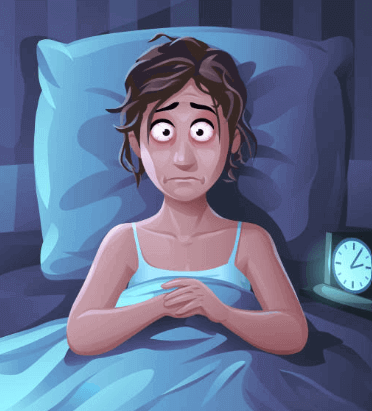
Insomnia | Understanding Sleepless Nights and Finding Rest
|
|
Tempo di lettura 5 min

Sleep is essential for our well-being, and we understand that a good...
|
|
Tempo di lettura 5 min
When sleep won’t switch on, nights can stretch and mornings arrive too soon. Insomnia is commonly described as difficulty falling asleep, staying asleep, or waking earlier than planned and feeling unrefreshed. While it shows up differently for everyone, the day-after effects are familiar: low energy, foggy thinking, and a shorter fuse. This guide takes a practical, non-medical look at why sleepless nights happen and what you can do—tonight and over the next week—to make rest more likely.
Insomnia isn’t one thing. Short-term (acute) insomnia often follows stress, travel, or routine changes and can settle once life does. Longer-lasting (chronic) insomnia sticks around for months and typically involves a loop of habits, worries, and environment cues that keep the mind and body alert when you want to wind down. This article focuses on everyday comfort strategies—routines, room setup, and positioning—rather than diagnosis or treatment.
Light, timing, and routine set the internal clock that nudges you toward sleep at night and alertness by day. Late screen time, shift work, jet lag, and irregular bedtimes can desync that rhythm, making you sleepy at the wrong times.
Racing thoughts and problem-solving at 2am are classic insomnia culprits. When your system sits in “alert mode,” wind-down cues struggle to land.
Late meals, long naps, and irregular schedules make it harder for your system to predict rest. Hygiene is simply “habits that make sleep likely.”
Even small interruptions (bin lorry, hallway light, notifications) can cause micro-awakenings. Blue light from devices signals daytime to the brain.
Caffeine can linger for 6–8 hours. Coffee, strong tea, energy drinks, and even dark chocolate can push sleepiness further away.
Some over-the-counter and prescription medicines can make nights lighter or more restless. Never change dosage without medical advice, but timing can matter.
When hips, shoulders, or lower back complain, your body fidgets to offload pressure—more wake-ups follow. Positioning can reduce those micro-moves.
An urge to move the legs or uncomfortable sensations can make staying still difficult. Gentle lifestyle steps and positioning may help.
Late emails, intense shows, and scrolling keep the brain in “seek” mode. Dopamine hits delay natural drowsiness.
Too warm, too bright, too loud—or the wrong pillow height—turns bedtime into a balancing act. Small environment tweaks often deliver outsized gains.
Prefer a guided version with one action per day? Start Day 1 of our 7-Day Sleep Comfort Plan.
No. This article shares lifestyle and comfort suggestions only. For diagnosis or treatment of insomnia or other sleep disorders, speak with a healthcare professional.
There’s no single best height. Side sleepers usually need a little more loft to keep the neck neutral; back sleepers often prefer mid-loft. The goal is relaxed alignment you can forget about.
No. Small, repeatable cues work best: dim lights, brief wind-down, and a fixed wake time. Consistency beats intensity.
For many people, yes. By reducing twisting and spreading contact more evenly, a full-length pillow helps you settle and move less overnight.
See the cluster hub: Sleep Disorders & Solutions — A Complete Comfort Guide.
Disclaimer: This article focuses on comfort and routine ideas. It is not medical advice. Always consult a qualified professional for assessment, diagnosis, or treatment of insomnia or other sleep concerns.